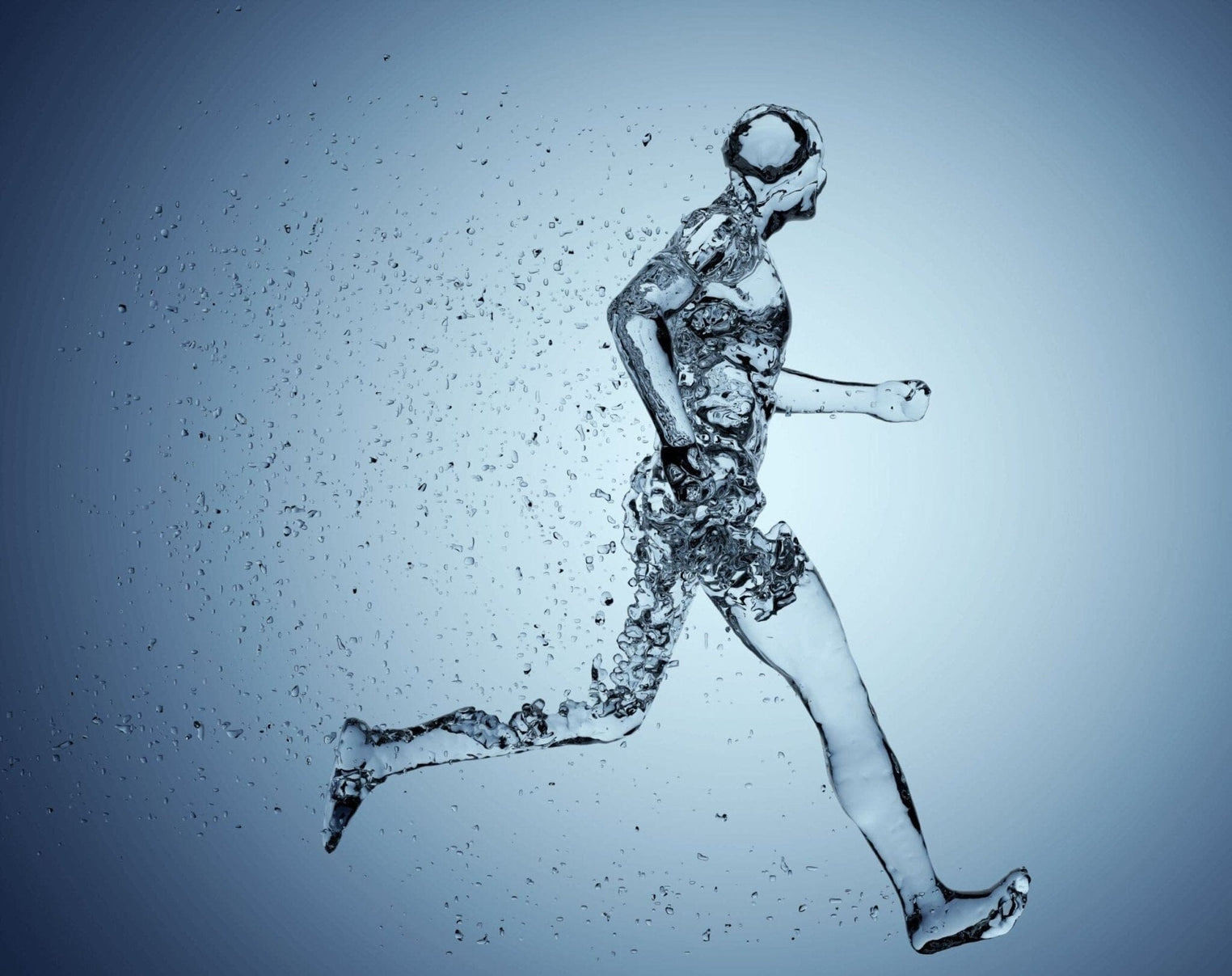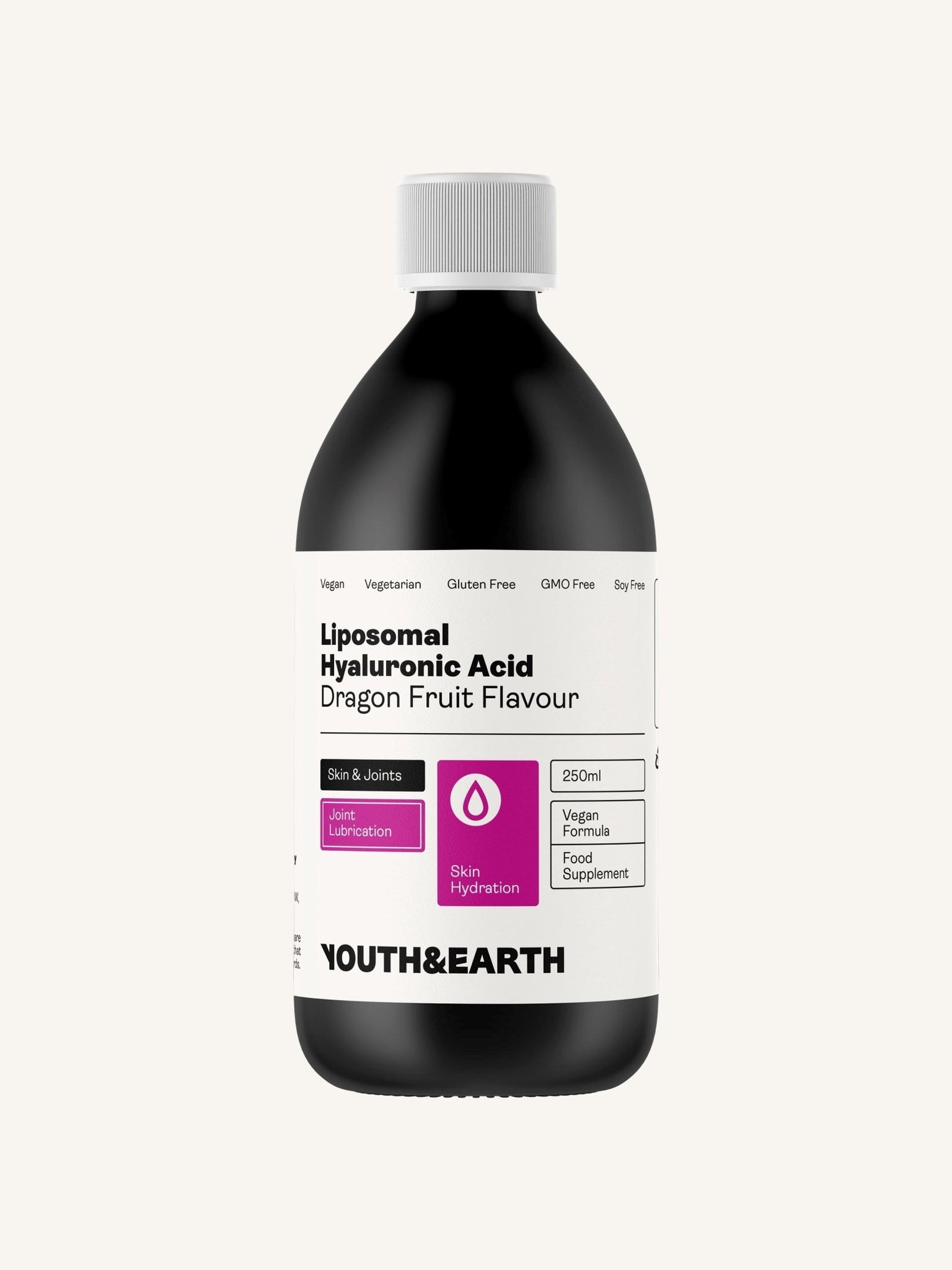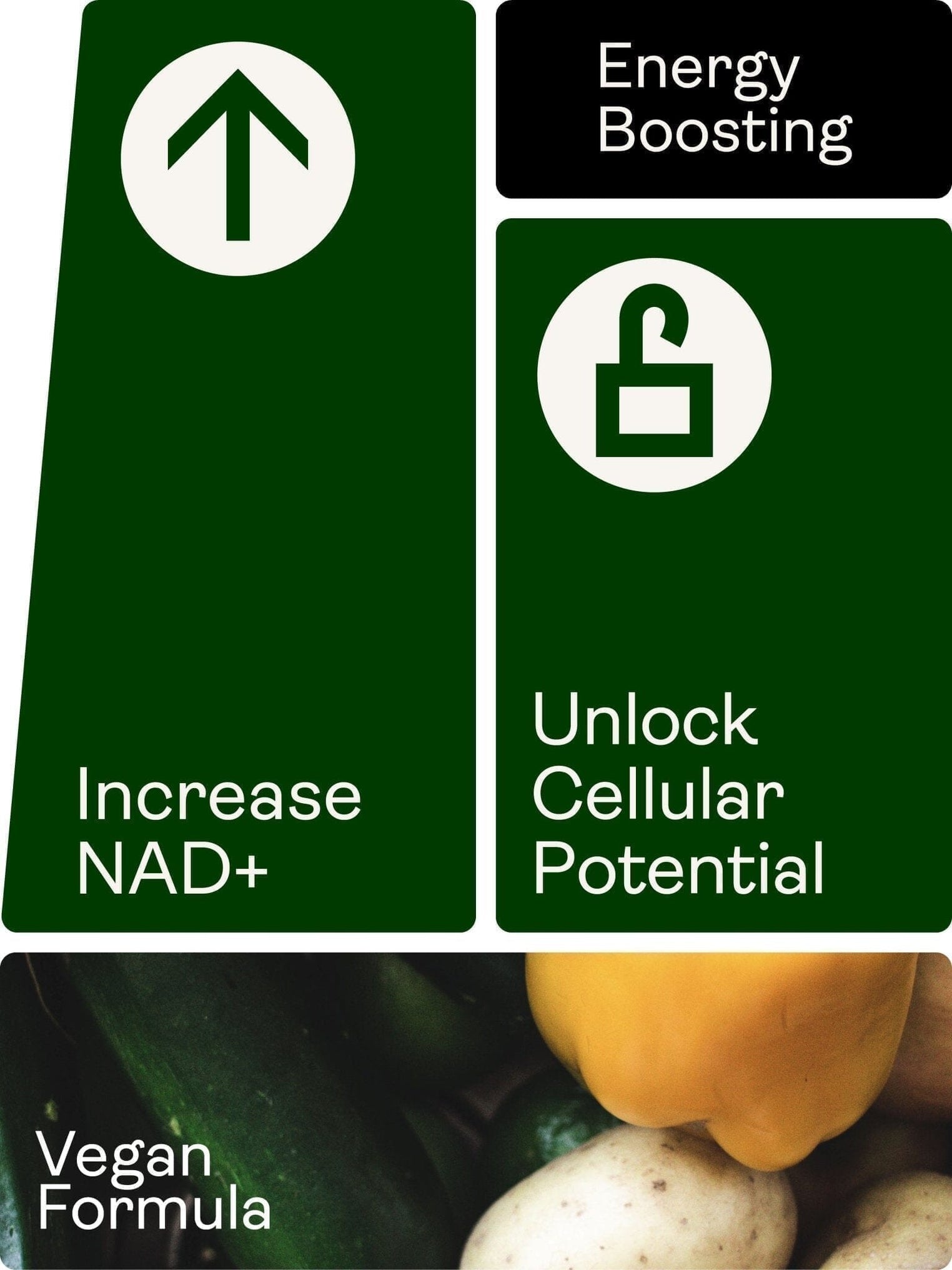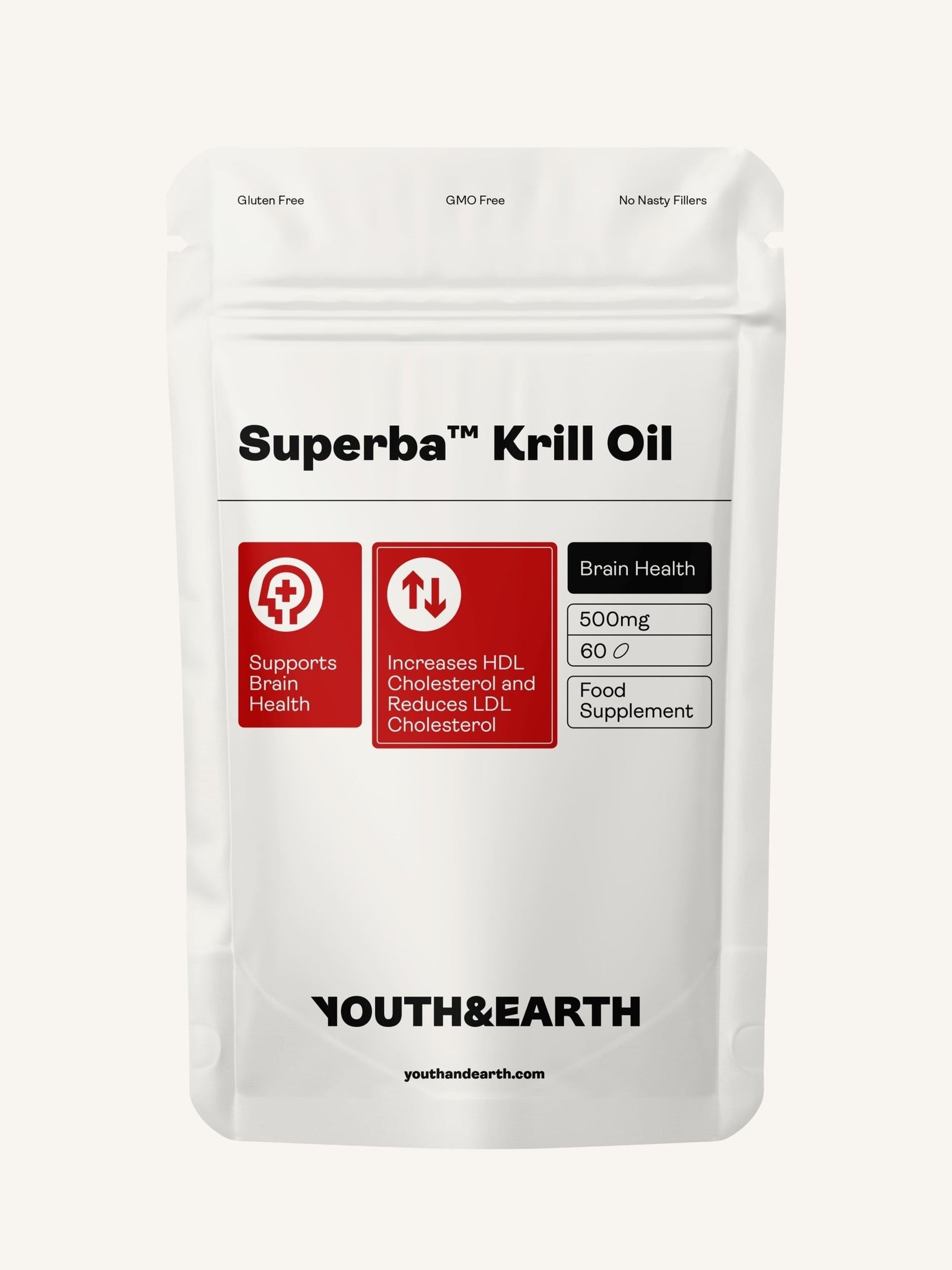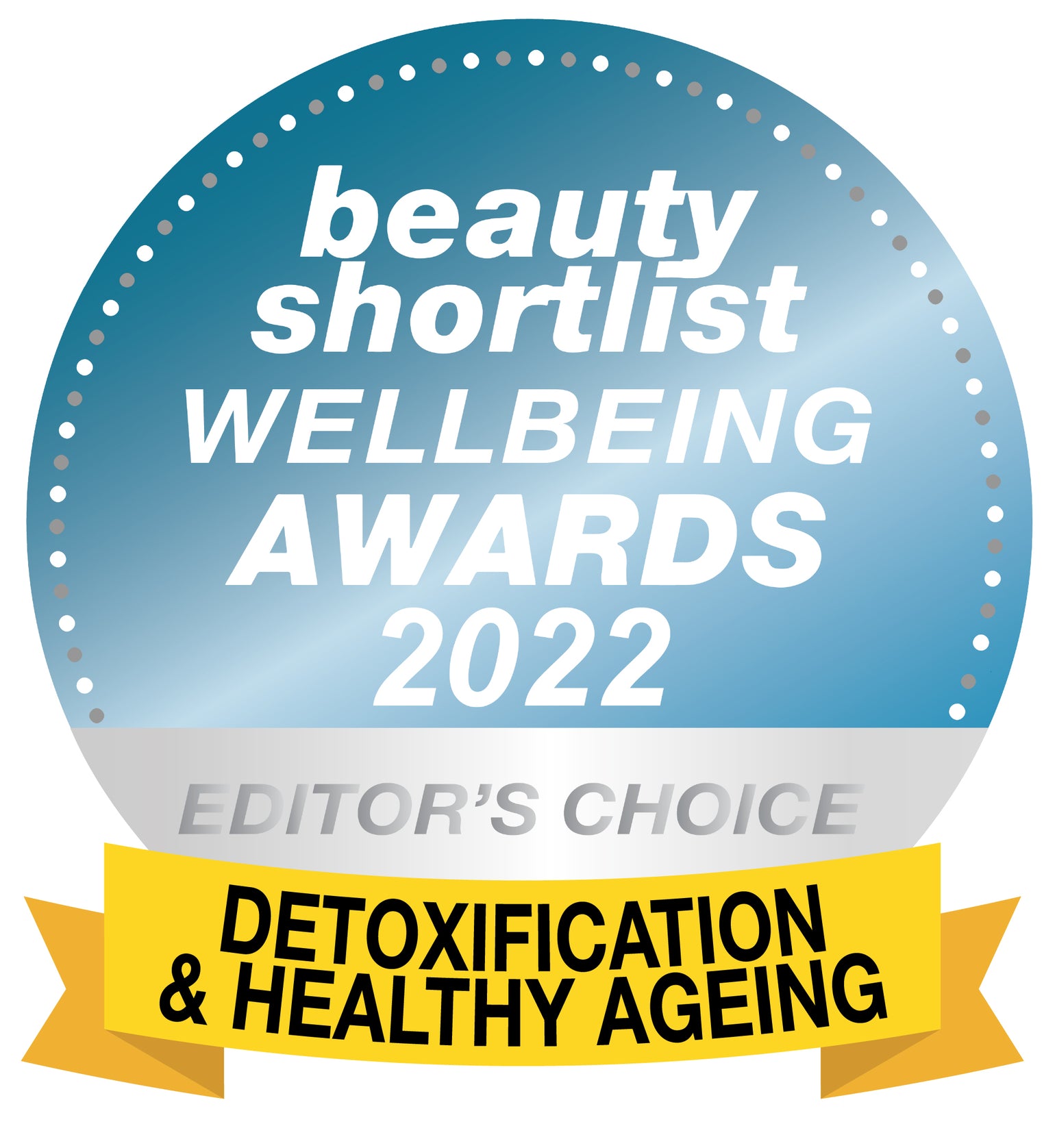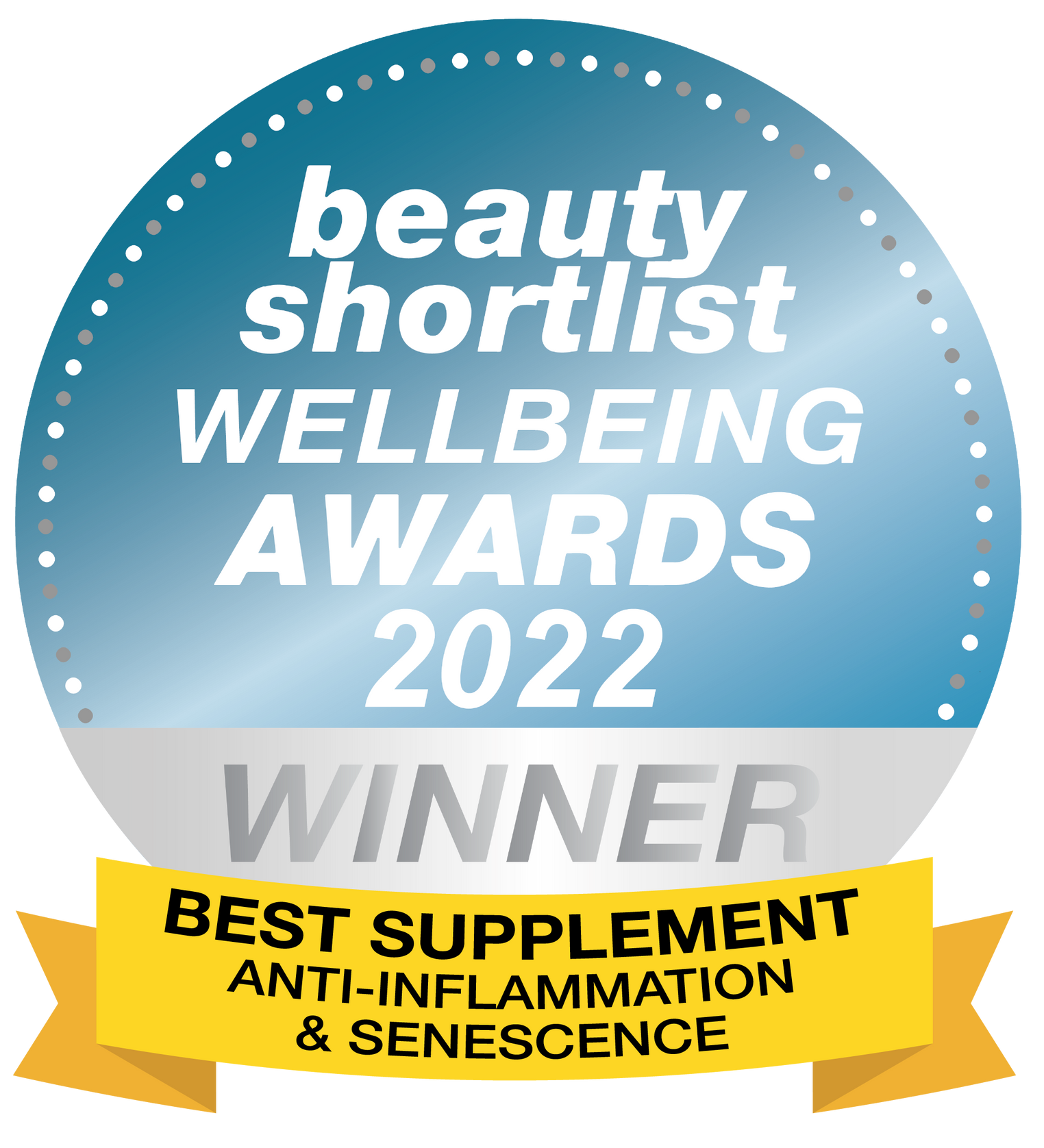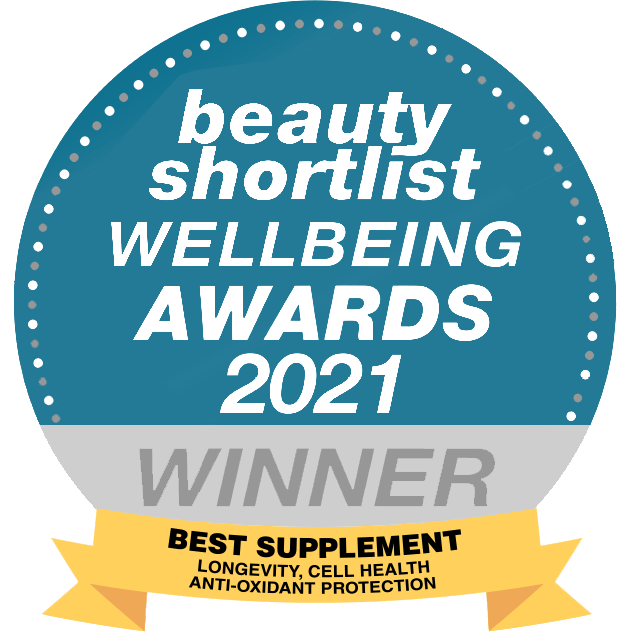TL;DR: Why Biohackers Love Hyaluronic Acid
Hyaluronic acid is a hydration-boosting molecule naturally found in your skin, joints, and eyes. As you age, HA levels drop—leading to wrinkles, dry skin, joint pain, and even eye discomfort. Supplementing with high-bioavailability HA can support smoother skin, better mobility, bone density, and wound healing. It’s one of the easiest, science-backed anti-ageing strategies in the biohacker’s toolkit.
Whether it’s used in serums, supplements, or injections, HA plays a vital role in skin hydration, joint lubrication, and tissue repair. Let’s unpack how this naturally occurring molecule supports anti-ageing and longevity.
Table of Contents
-
Top 5 Health Benefits of Hyaluronic Acid
-
Joint Pain & Arthritis Relief
-
Skin Hydration & Wrinkle Reduction
-
Wound & Sun Damage Repair
-
Bone Strength & Density
-
Dry Eye Support
-
-
Advanced Biohacking with Hyaluronic Acid
-
HA vs Collagen vs NMN: What to Stack
-
Why Molecular Weight Matters
-
New Science: Stem Cells, Mitochondria & Neuroprotection
-
90-Day Biohacking Protocol with HA
-
Pairing HA with Skincare Actives
-
Science Snapshot
| Mechanism | Function | Biohacking Benefit |
|---|---|---|
| Water Retention | Binds 1000x its weight in water | Deep skin hydration, reduced wrinkles |
| Collagen Support | Protects and stabilises collagen | Joint, ligament, and skin support |
| Tissue Repair | Promotes cell growth and blood flow | Speeds wound healing, supports longevity |
| Salute delle ossa | Preserves bone density in ageing | Slows osteoporosis progression |
| Eye Hydration | Maintains tear production | Relieves chronic dry eye |
What Is Hyaluronic Acid and How Does It Work?
Hyaluronic acid (HA) is a naturally occurring sugar molecule found throughout the body, with the highest concentrations in skin, eyes, and joints. Its key role is to bind to water, keeping tissues hydrated, plump, and mobile.
HA supports skin elasticity, joint lubrication, and wound healing. However, HA levels decline with age—leading to dehydration, stiffness, and wrinkles. Modern supplements use fermented, plant-based HA for higher purity and sustainability.
How Hyaluronic Acid Supports Anti-Aging
HA helps the body maintain youthfulness by:
-
Retaining skin moisture and firmness
-
Enhancing collagen stability
-
Reducing signs of joint degeneration
-
Repairing micro-damage in skin and connective tissue
These
Per saperne di più sull'invecchiamento, vi consigliamo di leggere il nostro articolo: I tre fattori che causano l'invecchiamento precoce.
Top 5 benefits of hyaluronic acid?
L'acido ialuronico è stato scoperto per la prima volta all'inizio degli anni Quaranta. Da allora è stato oggetto di migliaia di ricerche. Ecco alcuni dei suoi principali benefici.
Does It Help with Joint Pain and Arthritis Relief?
Le ossa, la cartilagine e le articolazioni contengono acido ialuronico. La cartilagine e il liquido sinoviale (una sostanza gelatinosa presente nelle articolazioni) proteggono e ammortizzano le ossa. Poiché l'HA assorbe l'acqua, aiuta a idratare le ossa, a mantenere il collagene e a proteggere la cartilagine e le articolazioni. Di conseguenza, è molto efficace nel ridurre i sintomi associati all'artrite e ad altre patologie degenerative delle articolazioni.
Ad esempio, uno dei numerosi studi ha dimostrato che l'HA ha aiutato le persone, di età pari o inferiore a 70 anni, con dolore al ginocchio (osteoartrite) dopo aver ricevuto 80-200 mg di HA al giorno per due mesi.
Can It Improve Skin Hydration and Wrinkles?
Questa molecola amante dell'acqua può trattenere fino a 1.000 volte il suo peso in acqua, idrata naturalmente la pelle secca e la fa apparire più morbida e liscia. L'idratazione extra riduce anche la comparsa di linee sottili e rughe. Numerosi studi hanno dimostrato che riduce questi segni dell'invecchiamento cutaneo e migliora l'elasticità e la compattezzadella pelle.
Does It Help Wounds and Sun-Damaged Skin Heal?
Absolutely. Hyaluronic acid also helps with tissue regeneration which makes it particularly effective at healing wounds and other skin damage, including sunburn. This is due to its ability to keep the tissue moist, manage inflammation, and stimulate the body to produce more blood vessels in the damaged area. This helps nutrients get to the damaged tissue and also helps the body remove waste from those areas.
What About Bone Strength and Density?
L'acido ialuronico sembra svolgere un ruolo fondamentale anche nel mantenere le ossa forti e sane. Alcuni studi hanno rilevato che l'HA può contribuire a rallentare la perdita di tessuto osseo nelle fasi iniziali dell'osteoporosi e un altro studioin provetta ha dimostratoche l'HA aiuta le cellule ossee a crescere.
Sebbene siano necessarie ulteriori ricerche sull'HA e sulla salute delle ossa, gli studi indicano che può aiutare le nostre ossa a rimanere forti e a ritardare la perdita ossea dovuta all'invecchiamento.
Can It Relieve Dry Eyes?
L'orbita contiene un fluido costituito quasi interamente da acido ialuronico. La mancanza di questo fluido può portare alla secchezza oculare cronica, perché l'organismo non è in grado di produrre abbastanza lacrime o le lacrime evaporano troppo rapidamente. La secchezza oculare cronica è estremamente fastidiosa.
Uno studio ha scoperto che 1 adulto anziano su 7 (di età compresa tra 65 e 84 anni) soffre di occhio secco. La ricerca ha rilevato che la prevalenza della condizione raddoppia dopo i 59 anni, il che sembra indicare che con l'età diventiamo più suscettibili a questa condizione. L'uso di colliri contenenti acido ialuronico può dare sollievo a questa condizione. È interessante notare che i ricercatori hanno scoperto che l'NMN è utile per trattare l'occhio secco e migliorare la funzione oculare. Per saperne di più sull'NMN, consultate il nostro articolo Cos'è l'NMN e ci sono effetti collaterali?
L'acido ialuronico viene utilizzato anche nella chirurgia oculare per idratare, ridurre l'infiammazione e accelerare la guarigione delle ferite. È stato approvato dalla Food and Drug Administration (FDA) per aiutare a sostituire i fluidi naturali in interventi come la rimozione della cataratta, la riparazione di distacchi della retina e i trapianti di cornea.
Quali alimenti contengono acido ialuronico?
Hyaluronic acid is naturally produced by the body, but certain foods can help increase or preserve its levels. Here’s a breakdown:
| Food Category | Example Foods | How It Helps with HA Production or Preservation |
|---|---|---|
| Bone Broth | Made from long-simmered bones and cartilage | Naturally high in HA and collagen compounds |
| Soy-Based Foods | Tofu, tempeh, edamame | May boost HA levels via natural estrogen pathways |
| Starchy Vegetables | Sweet potatoes, potatoes, jicama | Found to stimulate HA production in the body |
| Magnesium-Rich Foods | Leafy greens, nuts, seeds, avocado | Magnesium is a cofactor in HA synthesis |
| Citrus Fruits | Oranges, grapefruits | Help prevent enzymatic breakdown of HA, preserving levels |
Including these foods in your diet supports your body’s natural hyaluronic acid levels. However, for optimal results—especially with age-related decline—supplementation with a bioavailable form of HA remains the most effective strategy.
Choosing the Best Hyaluronic Acid Supplement
L'acido ialuronico è disponibile in diverse forme, come sieri, creme, integratori orali, colliri e iniezioni. Se avete una condizione specifica e il vostro medico vi consiglia l'acido ialuronico, molto probabilmente vi darà l'integratore più efficace. Ad esempio, se si soffre di osteoartrite al ginocchio, il medico potrà somministrare un'iniezione di HA.
I sieri sono ampiamente utilizzati nei prodotti di bellezza e nelle creme anti-invecchiamento, ma funzionano dall'esterno verso l'interno. Inoltre, alcuni integratori orali hanno una bassa biodisponibilità perché l'HA ha un peso molecolare naturalmente elevato, il che significa che i benefici per la salute sono minori.
Il nostro Acido Ialuronico Liposomiale ha un'elevata biodisponibilità e consente all'HA di essere assorbito direttamente nelle cellule e nei tessuti dove è più necessario. Questo prodotto rivoluzionario agisce in profondità nella pelle e nelle cellule, permettendovi di apparire e sentirvi più giovani.
Per saperne di più sugli integratori liposomiali e sul perché sono così efficaci, leggete Cosa sono gli integratori liposomiali e come funzionano?
Are There Any Side Effects of Hyaluronic Acid?
Hyaluronic acid is generally safe and well-tolerated.
Oral Supplement Side Effects:
-
Rare and mild
-
Caution advised during pregnancy, breastfeeding, or if on medication
Injection-Related Side Effects:
Le iniezioni di ialuronico nella pelle o nelle articolazioni presentano un rischio maggiore di effetti collaterali. Tuttavia, la preoccupazione riguarda una reazione allaprocedura di iniezione piuttosto che alla sostanza stessa. Gli effetti collaterali che possono verificarsi includono dolore nell'articolazione iniettata, gonfiore, rigidità, arrossamento, prurito o formicolio. Si possono anche verificare mal di testa e vertigini. Se si intende sottoporsi a iniezioni di HA, è meglio consultare il medico sugli effetti collaterali noti.
Advanced Applications of Hyaluronic Acid in Biohacking
How Does Hyaluronic Acid Compare with Collagen and NMN in a Biohacking Stack?
Hyaluronic Acid (HA),Collagen, andNicotinamide Mononucleotide (NMN) are frequently stacked in longevity routines. Each molecule targets different, but complementary, aspects of healthy ageing.
|
Molecule |
Primary Function |
Best Used For |
Synergy |
|
HA |
Hydration, lubrication, and tissue repair |
Skin, joints, eyes |
Enhances collagen function by maintaining hydration |
|
Collagen |
Structural protein for skin, joints, bones |
Elasticity, firmness, strength |
Works better when tissues are well-hydrated by HA |
|
NMN |
NAD+ precursor, supports energy metabolism and repair |
Cellular energy, DNA repair, cognitive health |
May improve HA production via SIRT1 activation |
Biohacking Tip:
Stacking HA + Collagen improves skin bounce and elasticity, while NMN promotes the cellular metabolism needed to rebuild collagen and HA-rich tissue. This trio can be foundational for anti-ageing interventions targeting both appearance and performance.
Why Molecular Weight Matters in HA Absorption
Hyaluronic acid’smolecular weight (MW) affects how it interacts with the body:
|
Type |
Molecular Weight |
Absorption |
Common Use |
|
High MW HA |
>1,000 kDa |
Mostly remains on skin surface |
Serums, injections for cushioning |
|
Medium MW HA |
400–1,000 kDa |
Some transdermal action |
Moisturisers, eye drops |
|
Low MW HA |
<250 kDa |
Best for oral absorption |
Supplements, liposomal delivery |
Low molecular weight HA is broken down into smaller fragments, allowing better bioavailability through the gut barrier. Youth & Earth’s INJUV and Liposomal HA use this format to deliver HA directly into the bloodstream and target tissues.
New Science: HA, Stem Cells, Mitochondria & Neuroprotection
Recent studies are expanding our understanding of HA beyond joints and skin:
-
Stem Cell Modulation: HA has been shown to influence mesenchymal stem cell migration and differentiation, especially in skin and joint tissue repair.
-
Mitochondrial Support: Some findings suggest that HA helps stabilise mitochondrial membranes and reduce ROS (reactive oxygen species) in damaged tissue environments.
-
Neuroprotection: Emerging research shows HA plays a role in protecting neural tissue by modulating inflammation and glial cell function—important for cognitive longevity.
These areas are early-stage but promising for biohackers interested in advanced regeneration, not just maintenance.
Case Study Concept: 90-Day Hyaluronic Acid Protocol for Visible & Measurable Change
Protocol Overview:
-
Products Used: Youth & Earth Liposomal HA + INJUV
-
Daily Dosage: As per product label
-
Supportive Habits: High-magnesium diet, bone broth, hydration, collagen stacking, moderate weight-bearing exercise
Suggested Metrics to Track:
|
Week |
Measurement |
What to Observe |
|
0 |
Skin moisture (corneometer), joint flexibility, subjective pain score |
Baseline |
|
4 |
Fine line visibility, hydration level |
Early improvement |
|
8 |
Joint range of motion, skin firmness |
Measurable effects |
|
12 |
Before/after photos, quality of life index |
Long-term biohacking gains |
Optional Add-ons: Include NMN for cellular repair support and Krill Oil to lower inflammation.
How to Stack Hyaluronic Acid with Skincare Actives
HA acts as a moisture magnet andenhancer when paired with other skincare ingredients. It helps shuttle active compounds deeper into the skin and prevents irritation by keeping skin hydrated.
Best Biohacking-Compatible Pairings:
-
Retinol (Vitamin A): HA reduces dryness and peeling commonly caused by retinol.
-
Peptides: Boost skin elasticity and collagen when layered under a hydrating HA serum.
-
Niacinamide (Vitamin B3): Improves skin barrier and tone; works synergistically with HA to reduce fine lines and redness.
Application Tip:
Apply HA first on damp skin to draw moisture in. Follow with actives like niacinamide or peptides, and seal with a ceramide-based moisturiser.
Conclusion: Biohack Your Hydration, Joints & Skin
Se state lottando contro i dolori e la rigidità delle articolazioni e la vostra pelle si sente secca e disidratata, l'integrazione con l'acido ialuronico può contribuire ad alleviare molti di questi sintomi. Per un ulteriore sollievo e per aiutare le infiammazioni, potete anche provare a integrare il nostro olio di krill, che ha dimostrato di essere utile per dare sollievo alle articolazioni infiammate e a molte altre condizioni. Per saperne di più sull'olio di krill e sui suoi benefici, leggete Cos'è l'olio di krill e perché fa bene? Come per tutti gli integratori, i maggiori benefici si ottengono se assunti insieme a una dieta sana e a uno stile di vita attivo.
Checklist: Biohacking with Hyaluronic Acid
✅ Rehydrates skin and reduces wrinkles
✅ Lubricates joints and cushions cartilage
✅ Accelerates wound healing and skin repair
✅ Supports healthy bones and reduces early bone loss
✅ Alleviates dry eye symptoms
✅ Works best in low molecular weight or liposomal form
FAQ: Hyaluronic Acid and Biohacking
What is the main benefit of hyaluronic acid for biohackers?
Hyaluronic acid supports cellular hydration, joint mobility, and tissue regeneration—making it a multi-benefit anti-ageing molecule.
How does Hyaluronic Acid compare to collagen?
Collagen builds structure, while HA hydrates and protects. They work synergistically in anti-aging routines.
What’s the difference between liposomal and regular Hyaluronic Acid supplements?
Liposomal Hyaluronic Acid is absorbed directly into cells, offering greater bioavailability and faster results this is because the Liposomes act like a trojan horse so we can expect it to be maybe 30 times more powerful.
Can diet alone boost HA levels?
Yes, but supplementation is more effective, especially as natural production declines with age.
Are there any conditions where HA supplementation should be avoided?
Caution is advised during pregnancy, breastfeeding, and for individuals with autoimmune conditions. Consult a doctor first.
Glossary
Hyaluronic Acid (HA): A sugar molecule that binds water in skin, joints, and eyes, supporting hydration and tissue repair.
Liposomal: A delivery method using lipid vesicles to improve nutrient absorption at the cellular level.
Synovial Fluid: The viscous fluid found in joints that reduces friction andcushions cartilage.
Collagen:The primary structural protein in skin and connective tissue.
Osteoarthritis:A degenerative joint disease caused by cartilage breakdown and joint inflammation.
About the Author
Ed Van Harmelen is the founder of Youth & Earth and a passionate advocate for biohacking and anti-aging since 2017. He has been featured in numerous podcasts and wellness publications for his insights on longevity, biohacking, and the science behind supplements. Ed is widely regarded as a pioneer in bringing cutting-edge anti-aging tools to everyday consumers, making the benefits of advanced biohacking science both accessible and actionable. He is also the founder of optimallyme.com, a leading B2B health optimisation platform, and V14, an all-in-one longevity supplement.
